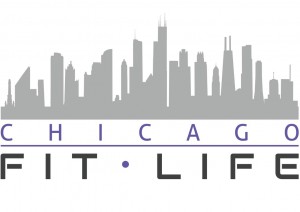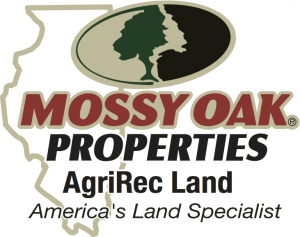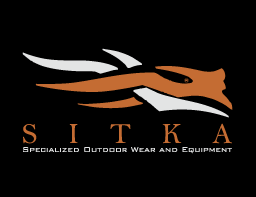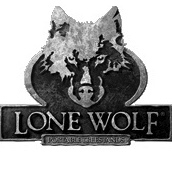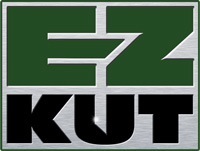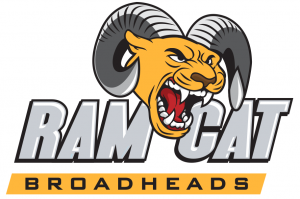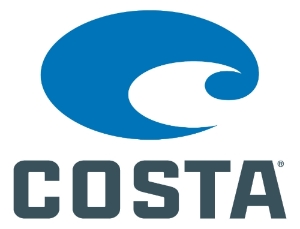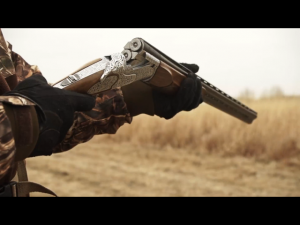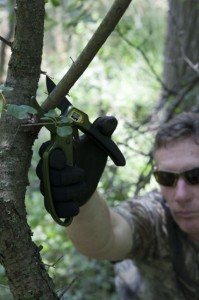
|

|
The Season Is Upon Us!It has been a few months since the last Fight Card so there is a lot to catch everyone up on. First, if you haven’t already noticed, is the new look of the newsletter. Since our content and quality kept improving, the emails became too long which led to many of our faithful subscribers not receiving them due to spam filters. Also, we wanted fans to be able to look up archive articles and browse around the newsletter more freely, picking and choosing which articles they wanted to read. All this propelled us to turning the Fight Card into blog posts via our website. Now, subscribers will get a brief email summarizing the articles for that particular month and then a link to our website to read on. The only article that will stay on the email will be the main post PERSPECTIVE. July and August were jam-packed with Takedown Events in Illinois and Wisconsin. Word is spreading fast throughout the business community in regards to the excitement our events are creating among our guests. Instead of golfing or sitting in a skybox at a sporting event, clients get to participate in activities involving shotguns, recurve bows, compound bows, crossbows and spears. In the next few months, we hope to have an online site dedicated solely to Takedown Events. The Takedown Team has been checking trail cameras, planting food plots and practicing overtime with their archery equipment for the upcoming season. This fall should be the best ever for Takedown video adventures! In this edition, you’ll learn tips on setting up your treestands, cooking up some bear meat, what kind of knife you should pack for survival, how to properly warm up those muscles to hit the woods, a review of CZ-USA shotguns and some pictures that highlight what our team’s been up to this summer. Hope you enjoy!
 Takedown Events have been a huge hit among the business community this summer. Who wouldn't like to throw a spear?  Book now your Spring & Summer events for 2015. Participants will now have the opportunity to try out recurve bows and crossbows!  Bob Wierema working the Takedown Exhibit Trailer at the FONA International picnic. Families got to enjoy archery, slingshots, fish casting and a horse show. Perspective Mountains and Meadows By: Jason Amato As the small private plane charged down the runway, I felt my heart beating out of my chest with excitement and anticipation. This upcoming trip would represent a number of first experiences for me. My first time flying co-pilot in the cockpit (I was warned not to pull any levers or push any colorful buttons), my first time to Montana and my first-ever spot and stalk with the bow for black bear! A few hours into our flight, we approached the majestic, snow-covered Rocky Mountains of Western Montana. At an elevation of over 30,000 ft. these mountains, though awe-inspiring, didn’t seem as big as I had envisioned them to be. That afternoon, we set out for the first hunt of the trip. Our guide informed us that we would be driving through the mountains and hiking to lookout points to glass the meadows for grazing bears eager to put back on all the weight they had lost from the winter hibernation. Seemed simple enough to me. Spend a few hours scouting, find the bear I wanted and then go get my bear rug. Man was I in for a big dose of reality! I’ll never forget reaching the summit of that first ridge top. It was the most breathtaking view I have ever witnessed other than the Great Rift Valley in Kenya. You could see for many miles and the horizon was filled with one mountain range after another. Trevor, our guide, instructed us that we would be hanging out there for awhile just glassing the distance meadows for any dark moving objects. From that distance, the key is to catch a glimpse of movement; otherwise it can be almost impossible to spot a bear from five miles away. It became evident to me very quickly that this wasn’t going to be as easy as I had originally thought. Sitting atop the ridge that afternoon, the mountains seemed a lot bigger than from the cockpit windshield earlier that morning. After a few hours of scouting without spotting a bear, some feelings of doubt began to creep in. By day four, we had only seen two bears and I was beginning to view these mountains as too big and vast to ever be successful. That day, I found myself hiking back up to that same ridge we had scouted from on day one. As I sat there, it struck me that this landscape before me represented more than just mountains and meadows. It depicted the journey everyone of us experiences throughout the course of our lives. Mountains and meadows. Currently, all of us find ourselves on one of these two landscapes. While the mountains of life are challenging and many times daunting, they also provide two key benefits to the individual that is faced with them. First, every mountain provides an opportunity for personal growth. If you hire a personal trainer to help you achieve more muscle mass, they would never tell you to go sit at the beach and relax. No, they would push your muscles to the limits by breaking them down so that they will grow back bigger and more defined. In life, God is our “personal trainer” if you will and the trials we face are the “weights” God uses to define and shape our character. Secondly, mountains provide us with spectacular views from the top that can’t be seen or experienced from the meadows. When you reach the top of that mountain in your life, there is an opportunity to reflect on all that you have overcome such as fear, doubt, insecurity, shame and disappointment. If you only lived in the meadows, how would you mature mentally or spiritually? How would you be stretched? How would you ever be able to answer the common questions in life such as: Do I have what it takes? Is God trustworthy? Is the peace that the Bible promises believers real? These questions truly can only be answered on the mountains. Conversely, the meadows of life can be quite enjoyable but can also become detrimental if we stay too long. All of us need times in our life where we can just exhale. These seasons provide us rest, rejuvenation and readiness for the next mountain. It is in the meadows we fill up our tanks and thank God for all the blessings we are experiencing. The danger in meadows is when they become comfort zones. Comfort zones are comfortable and rightfully so! Most of us, including myself, aren’t very thrilled about stepping out of these comfort zones and step onto the mountains. Unfortunately, comfort leads to complacency, complacency leads to mediocrity and mediocrity leads to atrophy. Back to the fitness training analogy: it is always good to give your body enough rest in between workouts and even take a week off after training hard for a month or so. However, too much rest will cause your body to begin reverting back to its old state. When we refuse to attack the mountains in our life over time we will inevitably experience atrophy of the heart, soul and mind. So, enjoy the green grass and the sun on your face in every meadow while it last, but anticipate the next mountain! Though coming extremely close on a beautiful cinnamon bear (exciting video to come on our website), my time ran out before being able to fill my tags. That’s the way it goes with bowhunting. Sometimes you come home with a trophy and most times you don’t. Either way, I never leave empty-handed. It is the overall adventure of the experience, the adrenaline of the hunt and the lessons learned along the way that fuel my passion. A picture with my trophy is the icing on the cake. This trip served as a great reminder that life is made up of many mountains and meadows. Where do you find yourself today? Are you grazing in the meadow, scaling the mountain or soaking in the view from the summit? Each landscape has its benefits and challenges. Enjoy the views while making the most of your mountains and meadows!  Jason set off to Montana for an exciting black bear spot and stalk hunt with the bow. The climax of the adventure involved a stand off with a huge cinnamon bear all caught on tape!  Jason's wife, Kristy, decided to finally grab the bow and give it a try. Not bad for a first timer and being almost 8 months pregnant!  Takedown hosted a Pre-Season Archery Prize Pack Contest that included some of our amazing partners such as Lone Wolf Treestands, EZ KUT, Ramcat, James Valley Scents, Scentmaster and Tru Fire. Congrats to Donald R. Muse Sr. on winning! Wilderness Self-Reliance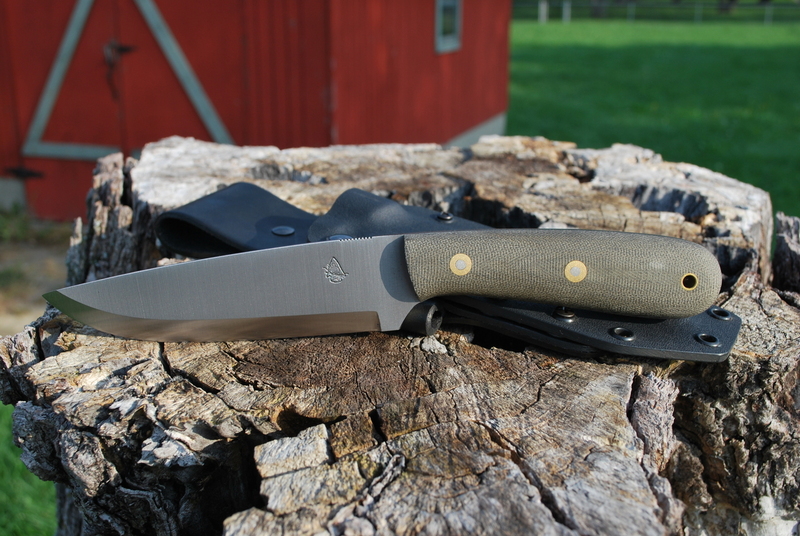 Cutting Tool: Can You Cut It? By: John Anderson You’re alone. It’s twilight when you pull yourself onto the riverbank, and you’re wet and cold. All your gear has been washed downstream. Maybe your boat capsized while shooting a rapid, or you were fly fishing and took a nasty fall. No matter the reason, you’re here and you’ve got nothing but what was strapped to your body. For your sake, let’s hope your inventory includes a good cutting tool. In this month’s installment of the Five C’s of Survival, we’ll explore cutting tools and why they are vital to your survival in a self-reliance situation. Whenever you venture into the woods, a knife of some kind is a must. The kind of knife you choose may vary, but any cutting tool is better than nothing. This blade will give you the ability to improvise many other things that will help you survive, like making a fire or building a shelter. You’d be hard pressed to reproduce a good cutting tool in the wilderness, so you’d better bring one in with you. SIZEBecause you’re relying on this knife as the single tool that could save your life in a worst-case scenario, you don’t want to choose something wimpy. I recommend a blade length of at least 4 inches (5-6 is better). In the width department, the thicker, the better. You’re going to be using this as a cutting, chopping, splitting, prying, and possibly digging tool, so don’t get a little knife. At the same time, you don’t need to feel like Crocodile Dundee with a machete strapped to your thigh. Take your time, compare your options, and choose the right knife for you. BLADEThis knife needs to hold a keen edge and be easily resharpened. It needs to be strong and durable. That means it needs to be made out of high-carbon steel. Stainless steel just won’t cut it, pun intended. It’s crunchy on the outside and chewy in the middle, and the first time you try to pry apart a thick log, you’ll thank me for insisting on high-carbon over stainless. The blade also needs to be fixed, not folding. A folding pocket knife is a great tool for everyday use, but if it’s your only knife in a self-reliance situation, then your only tool starts out broken in half, and it usually gets worse from there. In fact, not only should the knife’s blade be solid, it should be “full-tang.” That means it should extend all the way through the handle to the bottom as one, complete piece. This greatly increases the strength of the blade and makes it less likely to break out of the handle. In a self-reliance situation, if you can have one tool serve multiple purposes, you’re winning. If you carry an inexpensive ferrocerium rod (like the flint in your lighter, but much bigger and thicker) and have a hard edge on the back your knife, combined with some practice, you’re going to be able to produce fire. In order to effectively throw sparks off the ferro rod, the knife’s spine should have a hard 90-degree edge. If the spine of the blade is rounded on its edges, it may be more comfy on your thumb, but it won’t make many sparks. HANDLEThe handle of your knife can vary widely and should suit your personal preferences. It needs to fit well in your hand and have a good texture for grip and fine carving tasks. The only requirement is that it be solid and firmly attached to your knife’s full-tang blade. Hollow-handled survival knives are mostly for Hollywood. RECOMMENDED KNIFE OPTIONSHere are several knives that fit the bill. First, a great knife if you’re on a tight budget is the Mora Bushcraft Black (Amazon link: http://www.amazon.com/Morakniv-Bushcraft-Tactical-4-3-Inch-Sandvik/dp/B009O01H0Y/). It features a 4.3 inch blade made of good, high-carbon steel. It will throw sparks off of your ferro rod, and best of all, it’s only about $40. At that price, you are compromising the full-tang requirement, and the blade isn’t as beefy as we might like, but it also won’t hurt your wallet too badly. For a stouter choice, I recommend the Ka-Bar Becker BK2 (Amazon link: http://www.amazon.com/Ka-Bar-Becker-BK2-Campanion-Fixed/dp/B001N1DPDE/). This knife is a real bruiser, with a 5.5 inch blade that is a full 1/4 of an inch thick! It will handle almost any self-reliance cutting task with ease. The blade is full-tang and the handle is sturdy, so this is a great choice at about $70, and is the overall best buy in this list. If you want a purpose-made bushcraft knife, made out of incredible 01 Tool steel, and featuring a special Scandinavian grind that will slice through just about anything, look no further than the Pathfinder 1 Knife (http://www.thepathfinderstore.com/plsk1-pathfinder-1-knife/). Made by Battle Horse Knives to the personal specifications of self-reliance expert Dave Canterbury, the PLSK1 is a fantastic choice and a tool you’ll be able to hand down to your grandkids, but you’ll have to part with $300 of your dollars to acquire it. CARRY A KNIFEIn conclusion, there are a lot of things about a knife that can make it more suited for self-reliance tasks. However, at the end of the day, the best knife is the one you have on you. If you don’t already carry some kind of knife on a daily basis, I challenge you to begin doing so. It will serve you well in a variety of situations, no matter what kind of knife you carry, and just might help save your life!
John Anderson spent his youth in the woods of North Carolina and the jungles of South-east Asia. Having been raised by missionary parents, John has spent time in Mexico, Canada, and the Philippines, climbing trees, hunting game, and getting dirty. His father spent the time to teach him the ways of the woods, building fires, hunting deer, hiking, and camping. He received further training in the outdoors through the Outdoor Education program at Montreat College and from many trips on the trails and waterways of the Appalachian Mountains with his band of brothers. Takedown Trainer D1ROM By: David Buchanan In the past, post-stretching was shown to be lacking as a viable means for a warm-up. The use of an active muscular contraction was proven to be an acceptable replacement for stretching. In the proceeding articles, a program that uses an active muscular contraction will be discussed. The program is called D1ROM, an acronym standing for Desirable Prime (represented by the prime sign (1) in mathematics signalizing distinction), Range Of Motion. As an active outdoorsman, D1ROM is a preferred form to begin a functional training program. D1ROM is actually a type of motor learning that requires sensible application of a means rather than a mindless striving for the end. It becomes an educated emphasis on form and precision of movement rather than the slumped body posture assumed during non-efficient activity. D1ROM is a program that strives for relation and synergy. Relation means that the D1ROM should functionally represent that activity that one is preparing for, while synergy denotes control of the body, appendages, implements, etc… through time and space. The D1ROM method focuses on the synthesis (putting together) of activity as opposed to the creation (making something out of nothing). To be able to synthesize within D1ROM one must first begin by mastering singular function and then progress to complex function. This type of progression builds upon the body’s kinetic (movement) linkage. A warm-up should be a continual building and learning process. To help understand this progression of joint movements I have put together a small glossary of terms to explain the categories of motion. There are three categories of joint movement progressions: 1) Element- Which are joint actions in which a single joint is involved – e.g. elbow flexion and extension. 2) Compound- Joint actions in which two joints are concurrently involved – e.g. elbow flexion along with wrist flexion 3) Complex- Joint actions are the synthesis of many joints acting in accordance – e.g. finger flexion, wrist flexion, elbow flexion, shoulder flexion, all working together. This would also be where we could explain the many movements that you need to use to be a successful hunter; hiking, climbing, crawling etc The culmination of D1ROM always focuses on the goal of progressing to complex joint actions with the prerequisite being synergy and stability of all movements first. When complete, the D1ROM formula is Strength (stability over all joints within a potential range of motion) + Synergy (control of all segments within a desired range of motion) = D1ROM. In the next article, we will begin to show some of the exercises as we build your program. Dave is a registered Kinesiotherapist with 29 yrs. of experience. He has helped over 100 college athletes transition to the NFL.
|
ShareTweetCalendarSept 4th – 11th Sept 13th Sept 18th Everyday, counting down till Oct. 1!!!
Featured Partner CZ-USA Shotguns By: Jason Amato This year the Takedown Team was excited to announce our partnership with CZ-USA shotguns. With all the corporate events and outings we are now hosting throughout the year, it was vital that we found a firearm company that aligned with our vision to get more people outside! Takedown Events needed a shotgun that looked good, shot smoothly and was extremely reliable, all while staying in a price point many of our guests could realistically afford. The CZ Canvasback Gold Over/Under was the perfect solution. Visual, these shotguns give off the look of a much more expensive firearm. The black chrome receiver is lightly engraved with two gold birds inlaid on each side, and the barrels have solid mid-ribs for a rich, nostalgic look. If you want an Over/Under that can be carried around the club as if you belong without having to spend a mortgage payment on, this is your shotgun! The CZ Canvasback Gold is also a joy to shoot. The first thing I noticed when I held the gun up was how comfortable it felt in my hand. These shotguns are lightweight and are easy to shoot no matter the size of the individual. Like my preference with bows, feel is very important to me. I need my firearm or bow to feel good in my stance and execution of the shot. The CZ Canvasback is just a pleasant gun to shoot, bottom line! Finally, our shotguns need to be workhorses due to the mass amount of shells unloaded at each of our events. I am proud to say our staff has not had a problem with a single gun this entire year! Takedown guests range from the first-timer to veteran shooter and the CZ Canvasback has performed beautifully for every skill level. Properly cleaned and kept up, these guns come out of the Takedown Trailer ready to perform each week. If you are in the market for a great shotgun I highly recommend you give CZ-USA a good look. Not only do they make a great firearm, all the individuals that I interact with at their office are genuinely good people. Looks, performance and reliability all packed into one awesome shotgun! Check out this epic video below highlighting CZ-USA shotguns in action: Tech Tips Preparation Is Key By: Jerry Milos As the hunting season approaches let’s take a look at a couple of tactics in the field that contribute to better shots and ultimately success that brings meat to the table. Three things that are consistently overlooked are treestand placement, ground blind placement and cover, and creating shooting lanes. It is very important to prepare your treestand or ground blind site weeks before you intend to hunt them. That’s right now for our Wisconsin friends (as their season starts September 15th ) and very soon for most everyone else as most other states the season begins October 1st . First and foremost, select a strategic location for your treestand or ground blind at a travel route, pinch point, funnel or off some type of feeding location. Always be sure to set up on the downwind side of where you expect to shoot your targeted game. When hanging your treestand (we recommend Lone Wolf for their quality construction, ease of hanging, and their extreme quietness) be mindful of an angle that gives you a comfortable shot at multiple spots that you think game may approach or stage up/ feed. Take into consideration your shot placement and maximum distances you intend to shoot and determine which tree branches or foliage is in the way and mark to remove, both on the tree your in/or at ground level. This is when EZ KUT Products (EZ KUT Ratcheting Pruner and Big Brother Extending Pole Lopper) come in handy to surgically remove large and small branches. We have found these tools to be indispensable to cut live limbs up 1-2 inches for the pruner and up 3 1/2 inches for the lopper. They take the work out of the job with their ratcheting action, they are quiet and do not leave a mess like saws do. An excellent by-product of these tools is using what you cut as cover for your treestand and especially your ground blind. It is essential that you use surrounding foliage to cover up and blend in your ground blind. Next, it is very important to determine your entry path to your tree or ground blind. This should be a strategic path using topography such as creek/ river bottoms, valleys or hills to cover your entry. They should be located away and around where you think the game will be and they should be cleared to allow for a stealthy and quiet approach. Make sure these paths are trimmed of low and overhanging brush to prevent contact and also reduce the depositing of human scent. The EZ KUT pruner is perfect for this task! Light and compact, it will effectively remove this brush without human contact and you can pack it with you while your on the hunt to get any remnant brush you may have missed preseason. Another helpful hint while trimming shooting lanes is to do so with a lot of thought. What I mean by this is to not clear all the limbs and branches that are in your way but only the minimum that will allow for effective shots. Remember, this is the animal’s house and they are innately familiar with their surroundings. They will notice big changes and will change their behavior as a result. Cutting limbs on an angle with the raw cut facing up on overhead limbs and facing down on lower limbs will insure the animal will not see that bright, freshly cut limb and alert him of your presence. Lastly, be prepared to remove other brush and limbs as the season progresses as the woods are always changing and you can be sure a new branch you hadn’t seen before will be in the worst place possible and obstruct that perfect shot opportunity. Remember, with careful planning and good preparation you will be ready to have the best season ever!
 Jerry and ProStaffer Torry Granrath were wrestling up giant cats deep down south. Lots of big fish and great video.  Prostaffer Hunter Nelson showing off one of his many Wisconsin smallmouth caught throughout the summer.  Brad Eaton captured some amazing images on his epic fly fishing adventures. We can't wait for his next video to be finished. Trivia "Think You're An Elk Expert?" 1) The average weight of an adult bull elk is around ________. a) 500 lbs 2) The Shawnee Indian name for elk is Wapiti which means “_______________”. a) white rump 3) What elk subspecies has the largest body size? a) Tule 4) An elk calf weighs around 35 lbs at birth. True / False 5) A set of antlers on a mature bull can weigh up to ________? a) 60 lbs
Answers: c, a, b, T, d Take Em Down & Cook Em Up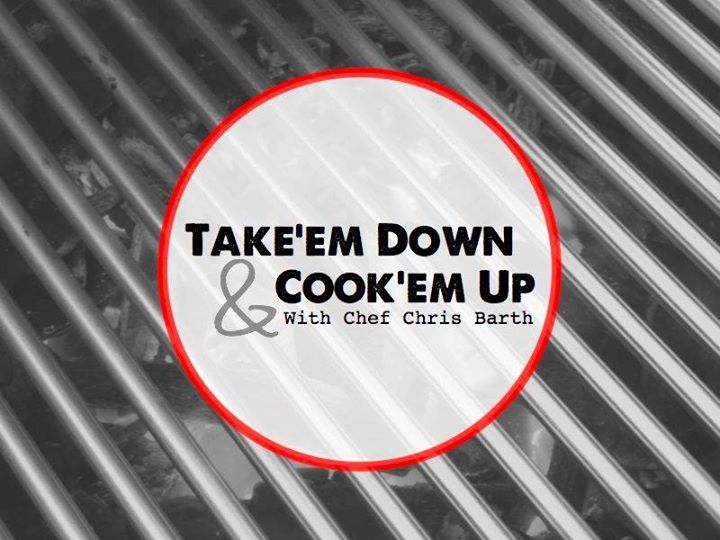 "Bear Down" For Dinner! Ingredients: -4 pounds bear meat Directions: – In a large mixing bowl combine flour, oregano, salt and pepper. Place bear meat in the bowl a little at a time and coat well.
Chef Chris Barth  Make a statement with the "Take 'Em Down" t-shirt. These high-end, 60/40 poly-cotton blend shirts were built to last. Check them out at takedownoutdoors.com/store/  T.O. Flexfit hats continue to be a hot item with Takedown fans. Show your support and look good doing it! The nylon fabric really makes these hats stand out. Pick one up at takedownoutdoors.com/store/ |




© 2010-2025 Takedown Outdoors. All rights reserved.
Website design and ecommerce development by Clicks Web Design Inc.
Website design and ecommerce development by Clicks Web Design Inc.
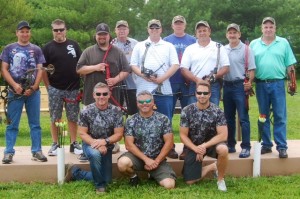

 David Buchanan
David Buchanan